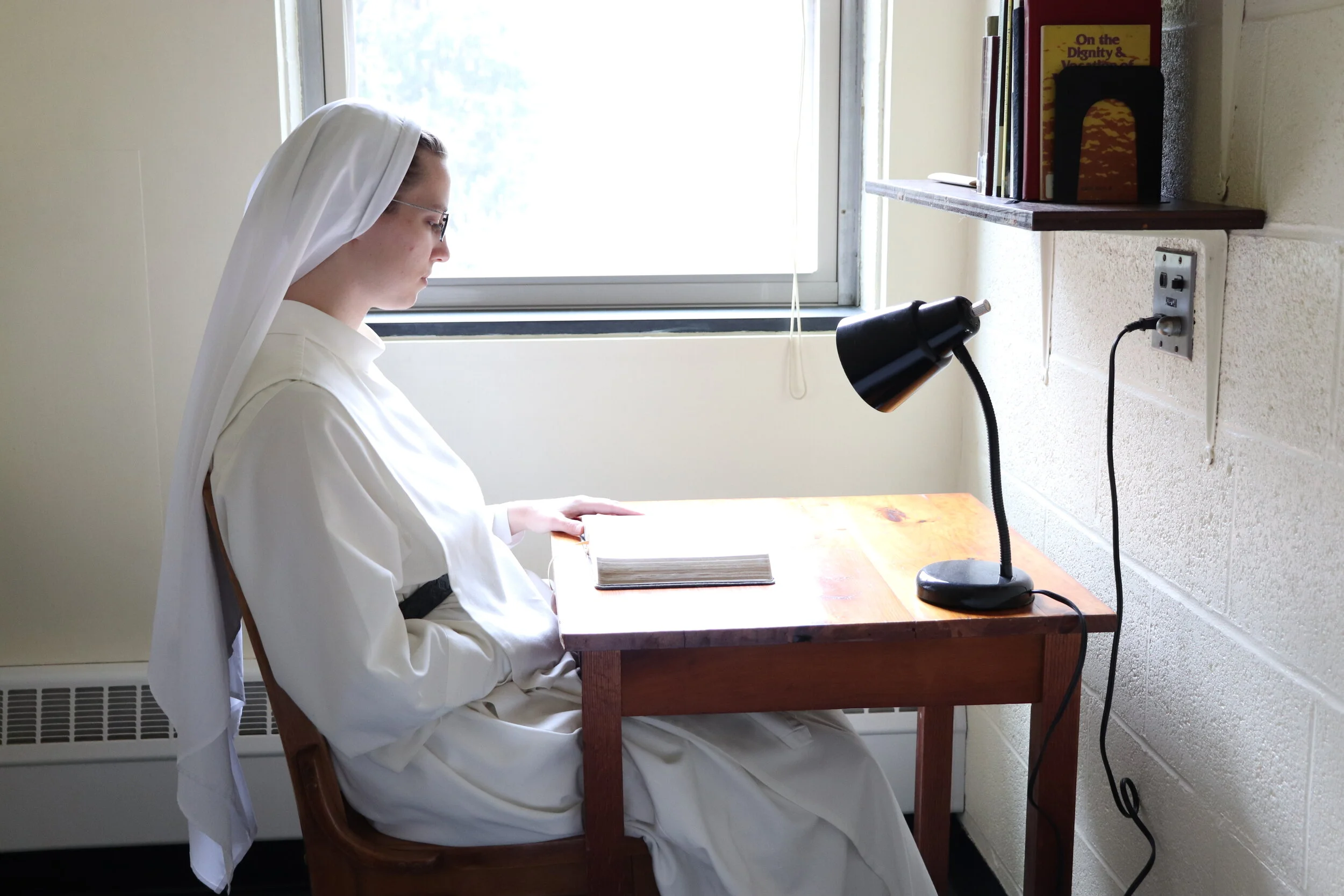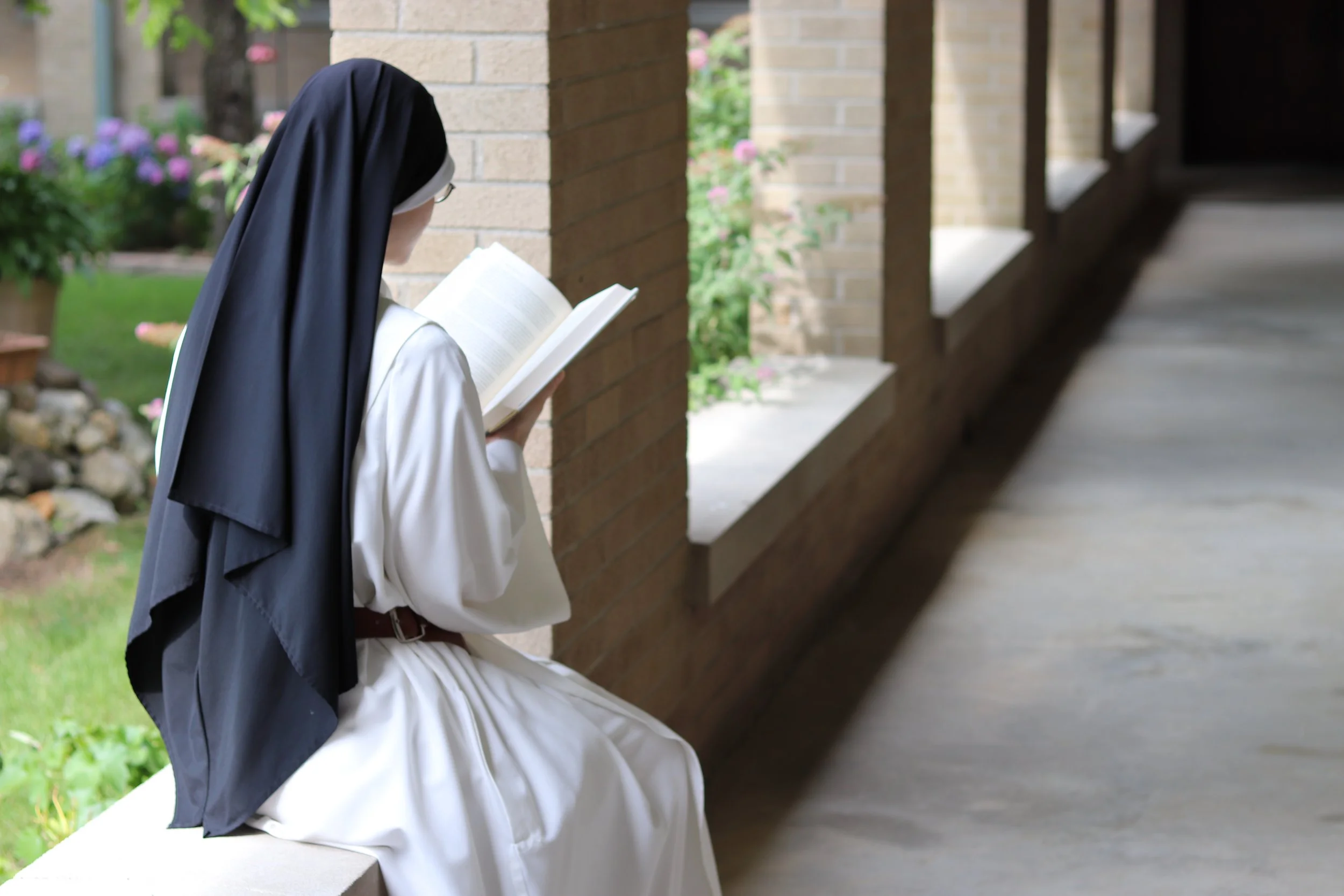Work
Work, both manual and intellectual, offers a manifest way of living out our obedience. We place all our gifts of nature and grace at the service of the common good, under the direction of the prioress. Work, whether washing floors, peeling potatoes, preparing classes for our novitiate sisters, or writing texts for our monthly mailing, is one of the ways we offer ourselves, body and soul to God, as living sacrifices (cf. Romans 12). In so doing we live in the service of his creative design and are associated with the work of redemption.
Usual daily work includes basic household chores such as cooking, sewing, cleaning and laundry. It also includes caring for our older sisters, maintaining our libraries, gardening, printing, making items for our gift shop such as candles, pottery, fudge, cards and other handmade items as well as other work that is conducive to the contemplative life and contributes to our financial upkeep.
"Because of the effort it demands, work is one of the more common forms of asceticism. In addition, the perseverance and skill which it requires and the benefits it brings foster mental equilibrium and the formation and development of personality. Work is demanded by religious poverty and serves the common good by building up charity through cooperation. Moreover, by work the nuns share the common lot of most people, especially the poor. Since in their life work is subordinated to contemplation, this manifests a right ordering of values among earthly activities, according to the spirit of the Beatitudes." (LCM)
No one shall perform any task for her own benefit but all your work shall be done for the common good, with greater zeal and more dispatch than if each one of you were to work for yourself alone. For charity, as it is written, "is not self-seeking," meaning that it places the common good before its own, not its own before the common good. So whenever you show greater concern for the common good than for your own, you may know that you are growing in charity. Thus, let the abiding virtue of charity prevail in all things that minister to the fleeting necessities of life." (Rule of Augustine)
"The Church is convinced that work is a fundamental dimension of man's existence on earth...Work is one of the characteristics that distinguishes man from the rest of creatures. Only man is capable of work and only man works...Man's life is built up every day from work, from work it derives its specific dignity but at the same time work contains the unceasing measure of human toil and suffering...." Saint John Paul II, Laborem Exercens














